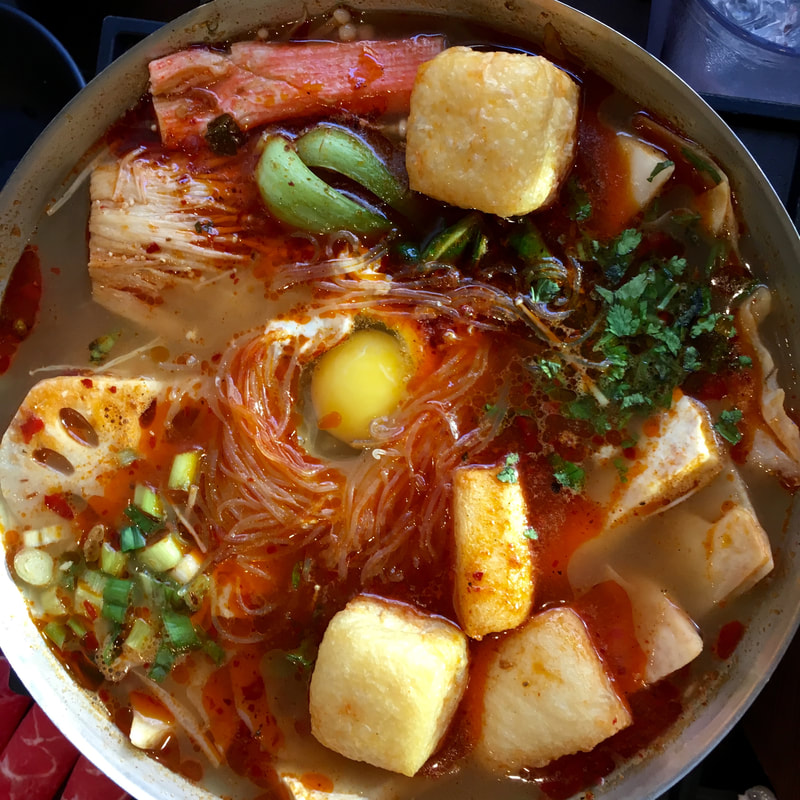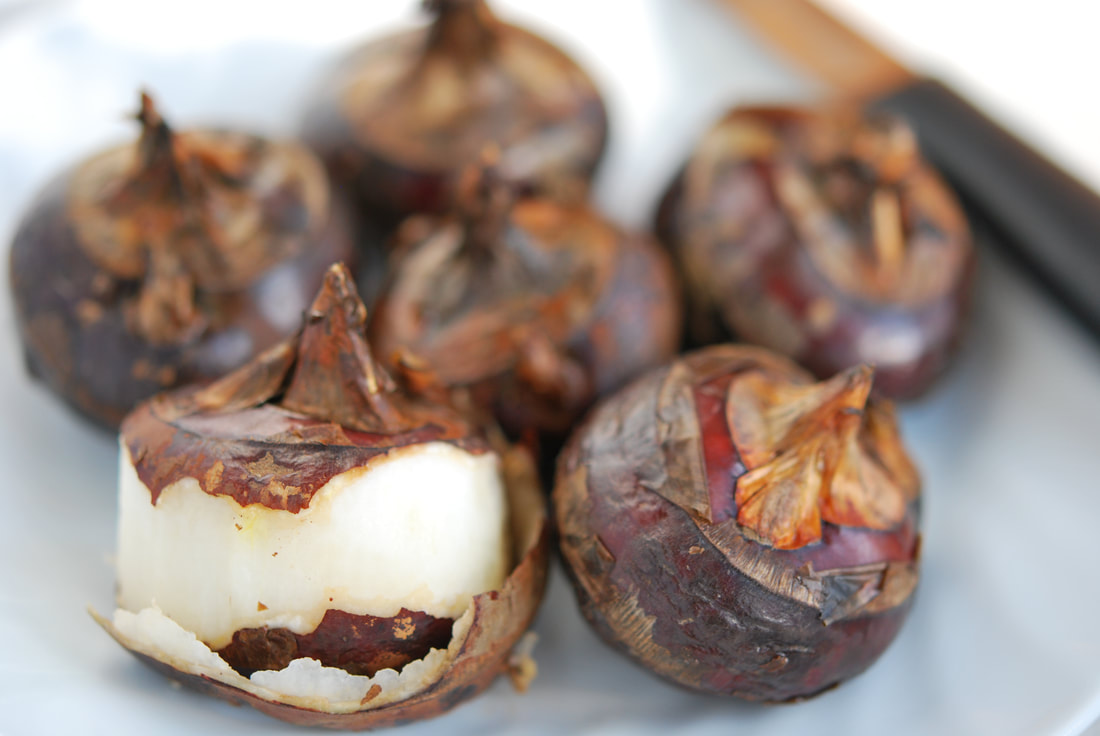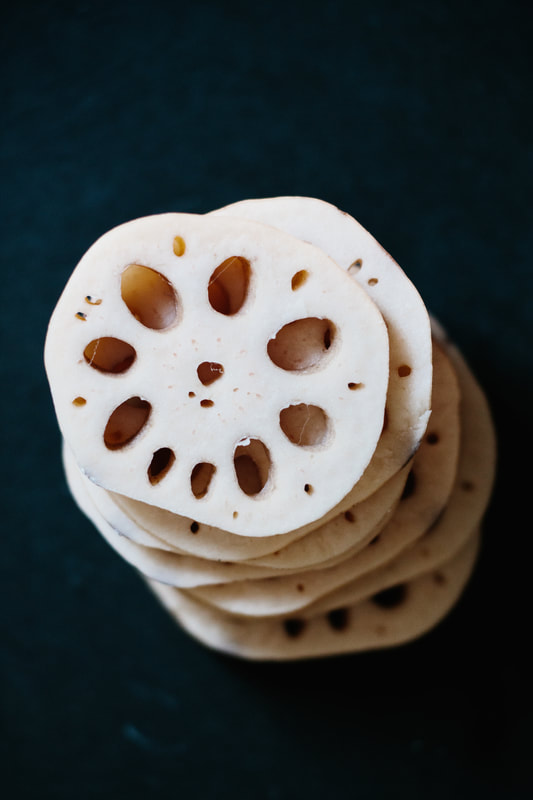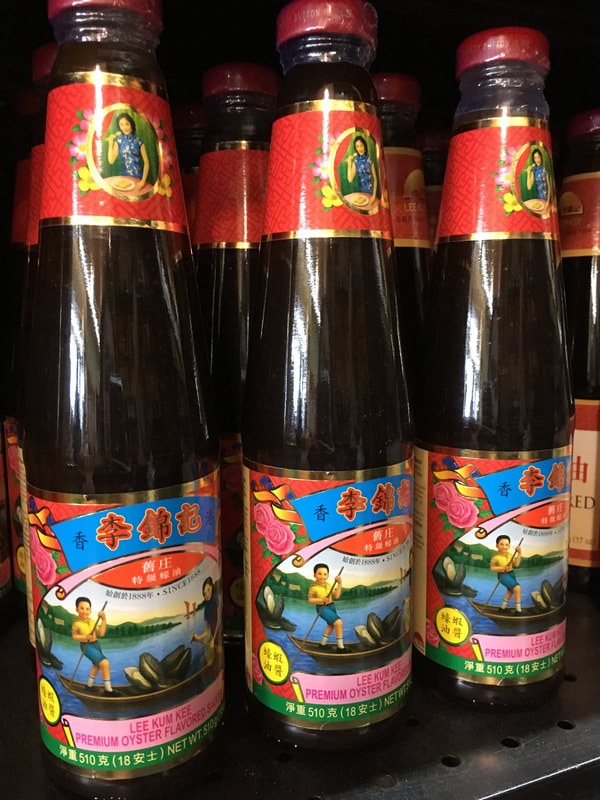|
Is this seriously not the most gorgeous pot of noodle soup you've ever seen? This "mala noodle soup" is from a local hot pot restaurant called Little Dipper Hot Pot House. As you can guess from the photo, it's a spicy amalgamation of vegetables, tofu, broth, an egg, noodles, and mala spices. The Sichuan peppercorn creates that delicious flavor that is both "ma" meaning "numbing" and "la" meaning spicy.
Want to put something together like this? Be sure to include the thin slices of lotus root like you see at the left of the photo - the round sliced thing with holes throughout (created by the air chambers that run through the root of the lotus plant). It will take this visual feast over the top!
3 Comments
If i'm stuck eating some sort of meat and vegetables dish from a Chinese carry-out and it contains little slices of water chestnuts, the first thing i do is pick them all out. Yuck! But see above? These don't look like the nasty tasting things that add that weird crisp crunch to your stir fry, do they?
No, I do appreciate the crisp crunch, but I love them by themselves, pared like a hard fruit. I actually thing of them just that way - like nutty little apples. While you might not mind them thrown in a stir fry, try them fresh if you ever get a chance. They'll surely make you rethink everything you knew about water chestnuts! If you are able to find lotus root fresh at your international supermarket, it will look something like a giant string of sausages. The outside of the roots may look a bit banged up, but that usually ok as long as the roots still look fresh. Remember that the lotus root has been growing underwater, and if you purchase from the store, it has also been shipped via truck before sitting on the shelf! Still, if you take a look in the little holes, it should look clean, without mold.
Lotus root is generally prepared for cooking like you see in the photo above. Slice the root thinly and you will see those beautiful pattern of holes created by the air channels inside the root. To prepare, peel the outside of the root using a vegetable peeler, then slice thinly. The thickness of the slice is mostly a personal preference, but lotus root is often cut into about 1/4"-1/3" slices. Lotus root should be cooked before eating. After slicing, you're ready to follow your favorite recipe! It's the season for delicious fall greens! And today, I'm sharing with you the best secret ingredient to cooking up a delicious plate of Asian leafy greens. The savory - with a hint of sweet - oyster sauce gives any food a complex umami essence. Oyster extracts provide a mild hit of flavor. It can be added to stir fries or used to create a marinade or base for a sauce, but my favorite use is just plopped atop blanched greens. Add some fried garlic or shallots and your greens will be ready to serve!
*And for vegetarians, a vegetarian option is made with mushroom extracts. |
AuthorI'm Wendy Kiang-Spray, gardener, home cook, and author of The Chinese Kitchen Garden. Learn more about the book here. Enjoy the blog and be sure to like The Chinese Kitchen Garden Facebook page for notifications when there are new posts. Archives
April 2019
Categories
All
|




 RSS Feed
RSS Feed